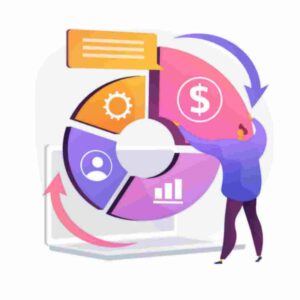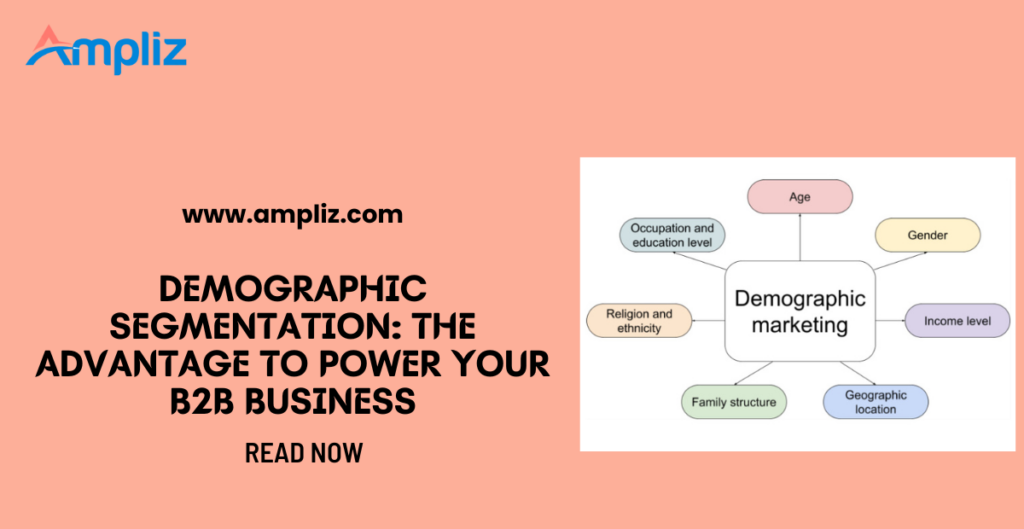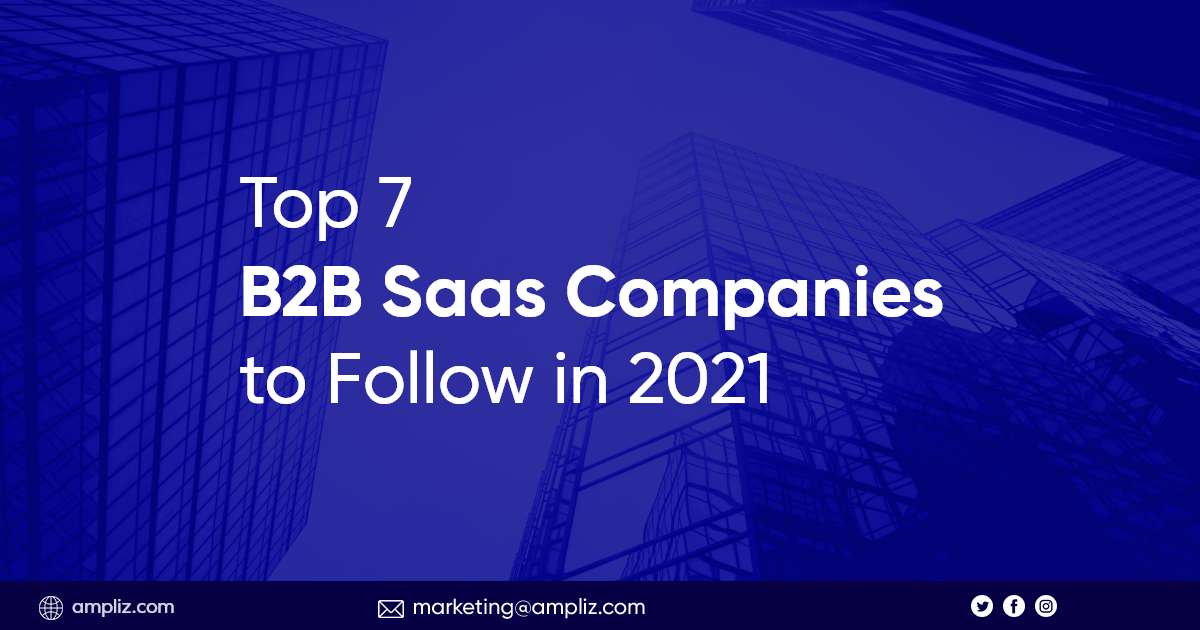Do you know why people say content is the king?
Because of its content, the words you speak/write give you opportunities to connect with your audience.
So why not to leverage its potential fully!! Yes, you must curate your content in such a way that it immediately resonates with your audience.
For that you need to know your audience well. And to know your audience well you can segment them in various categories.
There are four categories in which you should segment your audience and that is
- Demographic
- Firmographic
- Geographic
- Technographic
Each category gives you unique information about your audience that helps you to understand them better.
Demographic Segmentation: It’s about segmenting your audience according to their age, gender, interest and past purchase history.
Firmographic Segmentation: It is about segmenting your audience based on the type of
customers, the revenue they generate, the client they serve and so on.
Geographic segmentation: It is about segmenting your customer based on their location
Technographic data segmentation: It is about segmenting your audience based on the technology they use.
This segmentation helps you know and understand your audience better. Let’s see how demographic segmentation helps you and how you can effectively segment your audience demographically.
Before we see the demographic market segmentation benefits for B2B businesses, let’s understand what B2B demographic segmentation is.
What is B2B demographic segmentation?
Unlike B2C, demographic segmentation for B2B business is slightly different. For B2B businesses demographic segmentation includes segmenting the target audience based on
- Company size
- Company age
- Type of industry
- Budget constraints
- Business goals
- Job titles/Roles
And so on.
Now lets see benefits of demographic segmentation in marketing.
Benefits of demographic segmentation

Not only in B2C but, demographic segmentation is equally important in B2B businesses as well.
As mentioned above, when you segment your target audience as per their company size, company age, their budget constraints, their business goals and so on, you can assume their potential of buying your product/service.
This helps you in personalizing your message effectively.
Its demographic segmentation of your audience that helps you pitch the right prospects at the right time and with the right approach. This helps you improve your conversion rate.
Let’s see some other benefits of demographic segmentation.
1. Better resource allocation
Knowing, and understanding your target audience well and their potential to become your customer help you to allocate your marketing efforts and resources to the right audience. This helps you to avoid wasting your time and money unnecessarily.
2. Product development
When you understand your audience you get to know the product they are looking for. This helps you to develop the product with all these features that your competitor is lacking and your audience is demanding.
And when you make such a product, the product gets sold on its own. So, whether you’re developing B2B ecommerce platforms or a marketing automation tool make sure to leverage customer insights and make a product that corresponds to their needs.
3. Effective communication
When you segment your audience based on their various parameters, you can also get to know which mode of communication they prefer.
Some of them might be comfortable with emails, while others may be with phone calls, while others may be with social media. The demographic segmentation will help you to identify this and help you have an effective communication with them.
4. Enhanced customer retention
Retaining your old customer is equally important as attracting new customers. And you can do this when you develop loyalty programs, and customer support strategies that cater to their unique needs and preferences.
5. Market expansion
Understanding your target audience well by segmenting them will help you identify the new opportunities to expand into new markets or refine market penetration strategies.
6. Increased conversion rate and revenue
Segmenting your audience helps you understand them better and creates personalized and relatable content. When you create relatable content, your audience engages better with them and convert faster. When they convert faster, your revenue skyrockets.
Thus demographic segmentation of your B2B business is highly rewarding. But to get this you must segment them effectively.
Let’s see how you should do that.
B2B demographic segmentation Strategy

B2B demographic segmentation involves dividing your business customer base into smaller groups based on various demographic characteristics.
This helps you tailor your marketing and sales strategies to better target and serve each group.
Here’s how you can effectively perform B2B demographic segmentation:
1. Collect and Analyze Data
Demographic segmentation starts with collecting relevant demographic data of your current and potential B2B customers. Common demographic factors in B2B segmentation that you should include are:
Company Size: This can be measured by the number of employees or annual revenue.
Industry: Categorize companies based on the industry they operate in.
Location: Segment by geographic location, such as region, country, or urban vs. rural.
Company Age: The number of years a company has been in operation.
Job Titles/Roles: Understand the positions and roles of the decision-makers within the organization.
You can obtain this data through customer surveys, CRM databases, public records, or third-party data providers.
2. Segmentation Criteria
There is no hard and fast rule for the number of factors you should consider for segmentation.
You should determine which demographic criteria are most relevant to your business.
Consider the factors that are likely to affect purchasing behavior and preferences in your industry.
3. Create Customer Personas
Creating customer persona is an important part of your demographic segmentation strategy.
Develop detailed customer personas for each segment.
A persona is a semi-fictional representation of your ideal customer within a specific demographic segment. It should include information about their needs, pain points, goals, and behaviors. The more detailed persona you make, the more clarity you get about the customer.
4. Segmentation Analysis
Analyze the collected data to group customers into segments based on the chosen demographic criteria. Use data analytics tools and techniques to identify patterns and common characteristics.
5. Assign Values and Prioritize
Assign a value or weight to each segment based on its potential for your business. This enables you to prioritize segments that are likely to generate the most revenue or align with your strategic goals.
6. Tailor Marketing Messages and Strategies
Next comes tailoring your marketing message and strategy. Create customized marketing and B2B sales strategies for each demographic segment. This includes personalized content, messaging, and communication channels that resonate with the unique characteristics of each group.
Read Also: Firmographic Segmentation Strategies
7. Test and Iterate
Just implementation of strategy is not enough. Implement your segmentation-based strategies and closely monitor the results. You can do A/B testing and ongoing analysis, that will help refine your approach over time.
8. Data Enrichment
Data enrichment and enhancement is key to remain active in the game. Continuously update and enrich your customer data to ensure it remains accurate and relevant. You can do this by periodically refreshing your data with new information or using data enhancement services.
9. CRM Integration
Once you decide your various segmentation criteria, you must be able to manage and track it with different segments. To do this, integrate your segmentation criteria into your Customer Relationship Management (CRM) system.
10. Compliance with Data Privacy Regulations
Ensure that your data collection and usage practices comply with data privacy regulations, such as GDPR or CCPA, to protect customer information and maintain their trust.
11. Collaboration Across Teams
Prioritize effective collaboration between teams. Effective B2B demographic segmentation often requires collaboration between marketing, sales, and product development teams to align strategies and messaging.
12. Measure and Analyze
Regularly measure the performance of your segmented marketing and sales efforts. Adjust your strategies as needed to optimize results.
Conclusion
Thus key to successful sales and marketing lie in segmenting your customer and target audience. Demographic segmentation is one of them. It lets you have a sneak peek into your target audience’s business.




